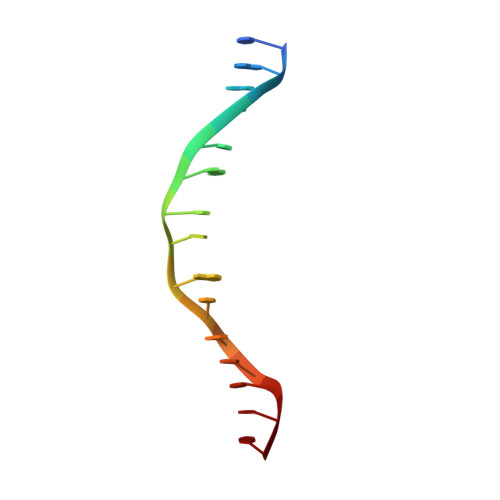Solution structure of a 2:1 complex of anticancer drug XR5944 with TFF1 estrogen response element: insights into DNA recognition by a bis-intercalator.
Lin, C., Mathad, R.I., Zhang, Z., Sidell, N., Yang, D.(2014) Nucleic Acids Res 42: 6012-6024
- PubMed: 24711371
- DOI: https://doi.org/10.1093/nar/gku219
- Primary Citation of Related Structures:
2MG8 - PubMed Abstract:
XR5944, a deoxyribonucleic acid (DNA) bis-intercalator with potent anticancer activity, can bind the estrogen response element (ERE) sequence to inhibit estrogen receptor-α activities. This novel mechanism of action may be useful for overcoming drug resistance to currently available antiestrogen treatments, all of which target the hormone-receptor complex. Here we report the nuclear magnetic resonance solution structure of the 2:1 complex of XR5944 with the naturally occurring TFF1-ERE, which exhibits important and unexpected features. In both drug-DNA complexes, XR5944 binds strongly at one intercalation site but weakly at the second site. The sites of intercalation within a native promoter sequence appear to be context and sequence dependent. The binding of one drug molecule influences the binding site of the second. Our structures underscore the fact that the DNA binding of a bis-intercalator is directional and different from the simple addition of two single intercalation sites. Our study suggests that improved XR5944 bis-intercalators targeting ERE may be designed through optimization of aminoalkyl linker and intercalation moieties at the weak binding sites.
- College of Pharmacy, University of Arizona, 1703 E. Mabel Street, Tucson, AZ 85721, USA.
Organizational Affiliation:


















